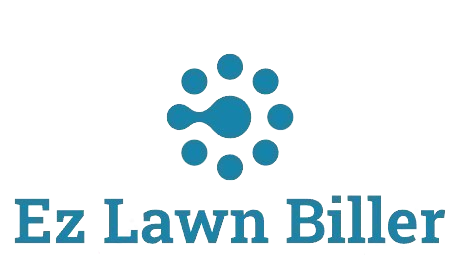Why You Should Optimize Routes as a Lawn Pro
Optimizing routes is a crucial practice for lawn care professionals looking to improve efficiency, reduce operational costs, and enhance customer satisfaction. This blog post will explore the significance of route optimization in the lawn care industry, covering the benefits, strategies, and tools that can help lawn care businesses thrive. By the end of this article, readers will understand why route optimization is not just a luxury but a necessity in today’s competitive landscape.
As a lawn care professional, your time is precious. Every minute spent driving between jobs is a minute not spent caring for lawns or engaging with clients. Route optimization helps streamline your operations, allowing you to serve more clients and increase your revenue. In this article, we will dive into the various aspects of route optimization, including its impact on business efficiency, customer satisfaction, and the overall bottom line.
Additionally, we’ll look at practical tools and software that can help you automate this process, including solutions like [Lawn Biller Software](https://ezlawnbiller.com/) that enhance billing and client management, making your life easier while you focus on what you do best—providing excellent lawn care services.
Understanding Route Optimization
Route optimization refers to the process of determining the most efficient path for traveling from one location to another, minimizing travel time and distance while maximizing the number of completed jobs. In the context of lawn care, this means planning daily routes that allow technicians to serve as many clients as possible while keeping fuel and labor costs down.
Research shows that inefficient routing can increase operational costs significantly. A study by the American Transportation Research Institute indicates that inefficient routing can lead to fuel waste, lost time, and reduced productivity. By optimizing routes, lawn care professionals can save money on fuel and reduce wear and tear on their vehicles, leading to lower maintenance costs over time.
Moreover, effective route optimization can enhance customer satisfaction. When clients see that their lawn care provider is timely and efficient, they’re more likely to remain loyal and recommend your services to others. This loyalty can translate into long-term business growth, making route optimization a smart investment for lawn care companies of all sizes.
The Benefits of Route Optimization
One of the most significant advantages of route optimization is the potential for increased efficiency. By creating a structured approach to scheduling and executing lawn care services, businesses can ensure that technicians spend as little time on the road as possible. This not only saves fuel but also maximizes the number of jobs completed each day.
For example, a lawn care company managing five lawns in a neighborhood can plan their route to minimize backtracking. Instead of zigzagging across town, technicians can complete jobs in a sequential manner, moving from one property to the next with the least amount of travel. This type of planning can lead to significant time savings and increased profitability.
Additionally, route optimization can help in reducing operational costs. Fuel prices tend to fluctuate, and by minimizing the distance traveled, lawn care professionals can shield themselves from the impact of rising fuel costs. Furthermore, less time on the road means lower labor costs, as employees can focus on providing quality service rather than spending long hours driving.
Tools and Software for Optimizing Routes
To achieve effective route optimization, lawn care companies can leverage various software tools designed specifically for service businesses. One such essential tool is lawn service software, like [Lawn Biller Software](https://ezlawnbiller.com/), which automates billing and scheduling, making it easier to manage multiple client needs efficiently.
Many lawn service software options come equipped with mapping and routing features that can automatically generate the most efficient routes based on job locations. This takes the guesswork out of planning and allows lawn care technicians to focus on their work rather than on logistics. Reports generated from these systems can also provide insight into operational efficiency, allowing for continuous improvement.
Integrating a lawn service app into your business operations can significantly improve communication and data management. These apps allow lawn care professionals to access client information and service history on-the-go, ensuring they have all necessary details at their fingertips, further enhancing service delivery.
Best Practices for Route Optimization
To effectively optimize routes, lawn care professionals should adopt several best practices. First, invest in quality software that meets your business needs. Tools that combine scheduling, routing, and billing will streamline operations and eliminate manual processes.
Second, regularly review and update your routes. Factors such as traffic patterns, weather conditions, and new clients can affect routing efficiency. By staying adaptable and revisiting planned routes regularly, you can ensure that you’re always operating at peak efficiency.
Another critical practice is to communicate with your team. Ensure that all technicians understand the importance of following optimized routes and how they contribute to overall business goals. This buy-in is essential to achieving long-term success and operational excellence.
Case Study: A Lawn Care Business Example
Consider a lawn care company serving the bustling city of San Diego. The business initially struggled with slow response times and missed appointments, leading to dissatisfied customers. After implementing a lawn billing software solution, they optimized their routing and established efficient scheduling practices.
As a result, the company was able to increase its job completion rate by 25% within just a few months. By utilizing the mapping features of their software, they planned routes that reduced travel time and fuel consumption, which drastically cut down operational costs. Customer satisfaction also soared, as clients appreciated the timely services, leading to an influx of referrals.
Similar success can be seen in cities like Austin and Denver, where local lawn care companies adopted software solutions for better route management. This not only improved their operational efficiency but also enhanced their reputation as reliable service providers. In a competitive market, these advantages are crucial for standing out and attracting new business.
Conclusion
In summary, optimizing routes is an essential practice for lawn care professionals aiming to enhance efficiency and improve customer satisfaction. By leveraging innovative tools and software, such as [Lawn Biller Software](https://ezlawnbiller.com/), lawn care businesses can streamline their operations, reduce costs, and ultimately boost their bottom line.
As the lawn care industry continues to evolve, the importance of proper routing cannot be overstated. With increasing competition and rising operational costs, investing in route optimization is not just an option—it’s a necessity. By adopting best practices and utilizing the right tools, lawn care professionals can position themselves for success, ensuring a brighter future for their business.
Take the first step towards optimizing your lawn care routes today, and watch your business thrive in a competitive landscape.




